Overwhelmed! Should we get a complete plan first?
Last summer, for better or worse, we bought a fixer upper for a lot of $$$ in the SF Bay area (Peninsula). It needs a lot of work... way too much work. Here is all the work I want to do to the house eventually (with 9 and 10 being optional dream items):
1. Remove the walls (including a few load bearing walls) in the main living area of the house creating a great room that includes the kitchen.
2. Gut and redo the whole 1978 kitchen (I want a professional high end kitchen as cooking is my passion)
3. Add a master suite (bedroom and bath) addition to the back of the existing second floor that will be ~700 square feet. This will affect the configuration of one of the existing bedrooms and possibly the existing bathroom as well. This addition will be located above the great room where I plan to have the load bearing walls removed, and the new master bath will be above the kitchen.
4. Gut and redo the entire 1941 pink upstairs bathroom.
5. Raise the ceiling in the hallway and down stairs bathroom from 6' 10" to something sane (this will be a difficult design problem because the guest bedroom is right above it).
6. Gut and redo the weird downstairs bathroom
7. Move the entrance to the backyard from the left side of the house to the right side of the house so that it is near the kitchen.
8. Put in an outdoor door kitchen/living space outside the kitchen
9. Install a wine cellar under the outdoor kitchen (the house's floor is 4-5 feet above the ground, so they wouldn't have to dig too deep).
10. Add a small greenhouse/sunroom to the left side of the house where the current back door is.
Looking at the whole list makes me a bit panicky! Makes me wonder why we did this to ourselves! :)
Anyway, after buying the house, we don't have enough funds left to do all this now, so we are planning on breaking it up into 3 phases: I am thinking 1 and 2 in the first phase, 3-6 in the second phase, and 7-10 in the last phase (is that a good idea or would it be much cheaper to do it all at once?).
So, before we start on phase 1, does it make sense to get plans drawn up for the whole thing or can I just tell the engineer about plans for a second story so that he makes sure the great room will support the load? Do we need to take in consideration the bathroom that will be above the kitchen for plumbing etc..?
Should I find out how much of this is even possible (I don't know how they will even get anything to the backyard since the walkways on the sides of our house are only 4-5 feet wide)?
Also, does anyone have any good contractor recommendations for the bay area? I am definitely overwhelmed with what to do first and whether or not to talk to regular kitchen remodelers or full architects... Also, we are on far more of a tight budget than I would like.... this is supposed to be the dream kitchen in our eventual dream home. I want more than anything to find a great GC or firm we can trust and use for all phases that is budget conscious, doesn't cut corners, and will be straight forward about pricing (no hidden fees or BS overhead charges like the GC we are using to do our seismic retrofit).
Btw, I know exactly what I want to have done for phase 1 for the layout (I will eventually post my kitchen layout for feedback in a different thread), but we haven't picked out the exact cabinets or things like that yet (although we have a lot pictures bookmarked). I am not sure if we want to get an interior/kitchen designer to help. It is so overwhelming!
Spending my nights reading these forums has been educational. There are lots of great threads with great advice (thanks!). And also lots of horror stories to add to my nervousness :)
Any advice would be much appreciated.
Thanks,
Robin
Here is our current first floor layout with some notes about what I want to change.
Comments (37)
Robin Morris
Original Author10 years agolast modified: 9 years agoJoseph Corlett, LLC
10 years agolast modified: 9 years agoRobin:
I would be aware of any "50% rules" in your area. This is where when your remodeling exceeds 50% of the value of your property, you have to make the property meet modern building codes. With the seismic considerations in Cali, that could be very substantial.
I'm not advocating ignoring the code; I'm advocating doing things in the proper economic order. I'd rather explain a little room remodel here and there to an inspector rather than have him see my vision filed as blueprints.
Related Professionals
Everett Kitchen & Bathroom Designers · Owasso Kitchen & Bathroom Designers · East Tulare County Kitchen & Bathroom Remodelers · Biloxi Kitchen & Bathroom Remodelers · Honolulu Kitchen & Bathroom Remodelers · Red Bank Kitchen & Bathroom Remodelers · Claremont General Contractors · Goldenrod General Contractors · Holly Hill General Contractors · Manalapan General Contractors · Redan General Contractors · Rossmoor General Contractors · Toledo General Contractors · Watertown General Contractors · Avocado Heights General ContractorsRobin Morris
Original Author10 years agolast modified: 9 years agoThanks Trebruchet... you are right! our city has this rule:
"When additions, alterations, or repairs within any 12-month period from the date of completion of any permit exceed fifty percent (50%) of the value of an existing building or structure, as determined by the Building Official, such building or structure shall be made in its entirety to conform with the requirements for new buildings or structures, including any requirements of the fire department or district."That means we are better doing things in phases.
Does that mean we shouldn't even bother getting complete plans before starting on the kitchen? Can we get complete plans without getting permits for everything? And if we do get permits for everything and then not do all the work in the "12 months" are we safe?
I worry supports put in place when we remove the walls will not support the addition and we will have to pay again to have the work redone.Thanks, this is very helpful!
Robin
Joseph Corlett, LLC
10 years agolast modified: 9 years agoIf by "complete plans" you mean your plans for the entire house, I wouldn't get those before starting the kitchen. You can get complete plans without getting permits, but I wouldn't show those plans to the division of inspection, nor would I do work without permits. Don't get permits for everything. Figure out your priorities and go a room at a time, but keep your comprehensive vision.
User
10 years agolast modified: 9 years agoThis will be more expensive done this way than doing a teardown. You inspectors aren't stupid. A bunch of smaller jobs do add up to more than the original house cost. The dollar value there is all about the land value. You'd end up with a much better home, and much more valuble home if you did 2015 new construction rather than 1950's build date ragtag hodgepodge.
sjhockeyfan325
10 years agolast modified: 9 years agoThe other specific thing you should consider is that at least in the peninsula city I used to live in (Burlingame), your potential "future second floor master bathroom" might not be permitted because of the building envelope and setback requirements.
Robin Morris
Original Author10 years agolast modified: 9 years ago@Trebruchet - Thanks! That is what will be easiest for us...
@hollysprings - I've read that costs of additions/remodeling and the cost of new construction is the same in my area ($200-$300/square foot), so I do not see how a new construction would be cheaper. I estimate that would cost at least 600k... it would take us 5-10 years to save up enough for that (and I can't live with this kitchen another year). Also the house is pretty solidly build (1941) and has a lot of character that we love and are going to try to preserve (just not the bathrooms or the kitchen). We will do a good job and make sure it is not a hodgepodge.
@sjhockeyfan - Thanks, that is very good advice... I have already looked at the San Mateo single family guidelines and the only thing we will have to be careful about is violating the daylight plane (which is easy to avoid). Most of the guidelines are about keeping the uniformity and character of the neighborhood and my neighborhood has none of that... every house is completely different, so we are lucky we don't have to worry about that.
Thanks everyone!
live_wire_oak
10 years agolast modified: 9 years agoDoing all of that piecemeal WILL cost more than new construction. No doubt.
geoffrey_b
10 years agoThe list doesn't look pratical to me. However if you were to proceed you need a complete pllan: you want to make sure that wiring / plumbing / duct work / framing that is done for the first remodel won't get in the way on the next remodel phase. And it will be in 'alignment' so you easily connect to it.
Robin Morris
Original Author10 years agolast modified: 9 years agoYes it is a very expensive wish list.
@live_wire_oak - Can you explain to me why doing it piecemeal will cost more?
My guestimates based on what I've read for costs in the is area are: phase 1: ~$100k, phase 2: ~350k, outdoor kitchen: ~60k
Teardown/rebuild would be ~600-700k plus outdoor kitchen (which should cost the same regardless): ~60k
So unless I am grossly underestimating something, I don't see how a rebuild is cheaper...@Geoffery: Can you explain why the list doesn't look practical (constructive criticism please)? And yes, that is what I am worried about; which is why I was thinking about getting a complete plan first...
Thanks!
Robingeoffrey_b
10 years ago@robin: "Can you explain why the list doesn't look practical "
Remodeling means taking the structure as it is, and updating - kitchen / bath.
You are talking about extensive renovations. You have a base buiding from 1941. It's 73 years old. It doesn't have any of the seismic foundation or attributes - attributes like 200/300 amp electrical service or heating/cooling or updated wiring, or updated plumbing - including connections to the street,what about the roof, what about the windows? And you want to sink money into it???
Also there's the specs: You will have a lot of headaches managing the contractors, and their subs. Also, you will have multiple contractors over a period of years. I predict it will never happen.
That's as constructive as I can get.
Remember: Don't love something that can't love you back!
CarpenterSF
10 years agolast modified: 9 years agoI have a few comments, in random order. I’m a contractor, so that’s the perspective you’re getting.
It will be considerably more expensive to do your project in steps, as opposed to one fell swoop. Including permits, engineering, and so on, and without surprises or changes, it may be 50% additional to do it in steps, or more. If earlier pieces need to be changed during later jobs, the price could go up even further.
If you don’t do all the drawings and all the engineering up front, it is very likely that later phases will undo some earlier bits. The plumbing from the new upstairs bathroom might need to go through the space occupied by the new beam in the family room, or whatever. New living space on the second floor may require structural work all the way down to the foundation. It would be a shame to have to open up your new kitchen walls in order to add hold-downs and other structural pieces for the new master suite. On the other hand, doing all that prep work in the earlier stage will be expensive, and if you change your plans or don’t do the work for some reason, that would be wasted money. A good designer can help you make good decisions.
Raising hallway ceilings is a funny deal. A building’s seismic resistance often depends on a floor acting as a single membrane. If you cut a line down the middle of your second floor in order to raise a first floor ceiling, you may compromise the strength of the building and require some expensive work. Or maybe the hall ceiling is low because heating ducts and other infrastructure were run along the ceiling, and you can could put a furnace in the attic and remove the ducting (for less expense than raising the floor). Do you know why the floors are lower? Sometimes there’s an access panel into ceilings that have been dropped.
Don’t be paranoid about building departments and inspectors. Building departments and inspectors are underfunded and overworked, and don’t have time to look for secret plans. You should be able to get clear answers from the San Mateo building department about how they make the determinations of new value v. original value, etc. If there’s a 12-month/50% rule, then you should expect them to follow it to the letter, and not care about your future plans. If you decide to do some prep work in an early phase for a later phase, you can just explain your plan to the building department or inspector. They normally won’t care at all, unless they think you’re going to try to do something without permits. Bay Area building departments are all very professionally run.
The plans that you submit to the city need to reflect your current work. You can’t submit plans for a long-term sequence of projects, and then just get permits for one part or phase of it. You submit plans that reflect the scope of work in the current permit.
Don’t worry about a contractor’s ability to get materials into the back yard. We have people and cranes to make that happen.
Moving entrances can be difficult. I don’t see anything to be a concern, but fire codes often affect the question. A contractor or designer or architect should be able to help you figure it out.
Talking with a designer or architect or engineer or contractor will help you avoid such problems as rooms without enough windows or emergency exits.
Do you need an architect? Well, you need a designer of some kind, whether it’s an architect, or a non-architect designer, or an engineer. You’re unlikely to get very much help from most contractors before you have at least a preliminary set of plans. Most of us aren’t willing to put the very expensive and time-consuming effort into looking at a homeowner’s project, until we have plans to evaluate.
Cost ��" Most contractors are very budget-conscious. We’re aware that we operate in a competitive market. You would do well to read up on the CSLB site about home improvement projects; some practices that are common elsewhere aren’t allowed in California: no front-running or advance payments, no time and materials contracts, etc. But budget-conscious doesn’t mean inexpensive. Good contractors are expensive; very good contractors are very expensive. That you can’t get what you don’t pay for is as certain as gravity.
I recommend finding a designer or architect. Be very clear and specific about your budget. You will not offend any home improvement professional by discussing money; they will welcome any honest discussion. As soon as you have preliminary plans, give them to a contractor for a ballpark number, and adjust from there; some architects, designers, and engineers are very focused on value but others are quite nonchalant ��" it’s not their problem.
As I said, random responses. Good luck with your home.
Joseph Corlett, LLC
10 years agolast modified: 9 years agoDoing things piecemeal may be more expensive, but may be the better value. When you do a teardown, you have no where to live. When you do a bit at a time, you get to live there. This must be calculated into the big picture.
chibimimi
10 years agolast modified: 9 years agoI have nothing to add to what the others have said, but I do have a question concerning raising the ceiling height: What is the tiled area in the upper left-hand corner? Is it full height? If so and if it's just passageway to a door you want to get rid of, plus closets, would it be possible to move the downstairs bath there? The current hallway and bath could then become pantry, closets, laundry -- some space that won't suffer from having a low ceiling.
scole115
10 years agolast modified: 9 years agoI know you probably will not want to hear this but you need to do a tear down. We bought a house also in the SF Bay Area that was built in 1956. I looked into piecemeal improvements and it just doesn't pen out. It will be cheaper to bring in the plumber for one big job rather than 3-5 smaller ones, etc. The same is true of all the trades. You are also planning on major changes, you are touching everything.
The systems of your house probably need to be replaced, electrical, plumbing, hvac, etc. The foundation is probably cracked in a few areas, the windows will be bad, dry rot will be everywhere, mold in the bathrooms, etc. Your roof lines will be all wrong w the addition. If this is your forever house you will want it done right. If you are doing it to sell in x years people will pay for the older, larger lots and a new house. Windows alone are easily 20K and that is for basic windows, it could easily go up from there. I don't think you are thinking about these things in your costs.
Also are you going to live there w/ these major changes? It will take years. Also don't forget permit costs and designer/archi/engineering fees. Our permit fees alone were 22K. Archi/engineering fees were another 30K and that was cheap as I know a few folks.
Also the cheap, great, cuts no corners gc does not exist. I used a great gc that went out of his way to build above code (remember code is the floor, not the ceiling of building standards) He had suggestions of how to save money and time. You generally get what you pay for.
Good luck and please get some professional guidance through an architect or builder. Remember the build should be fun!
This post was edited by sillylady2 on Sun, Mar 30, 14 at 4:05
Oaktown
10 years agolast modified: 9 years agoHi robinlmorris,
Please talk to some architects/contractors first. They won't mind, I talked to folks even before we bought our property to find out what lot characteristics to look for. They can give you thoughts specific to your area because the building/planning requirements can vary a lot from area to area.
A few things to keep in mind about phased remodeling vs. a tear down:
A new build or big enough remodel will have to comply with 2014 Title 24.
If you wait and save to rebuild, remember that by 2020 all new builds are supposed to be net zero.
A remodel should keep your property taxes lower in San Mateo County, especially if you do not add sq ft.We did a tear down because the house we bought was falling apart.
Good luck!
speaktodeek
10 years agolast modified: 9 years agoOne option that has not been mentioned is a complete tear-down and then a phased build-up over time.
Robin Morris
Original Author10 years agolast modified: 9 years agoI want to thank everyone for taking an interest in helping me. Regardless of what we wind up doing, it will be a long ride and I will need a more advice and help along the way.
@CarpenterSF - That is a lot great advice...I cannot thank you enough for taking the time to write such a lengthy reply. I am going to start interviewing designers and architects.
@Chibimmi - I wish it were ducts! But alas it is the second floor. I am attaching a cross sectional, so it is more clear what I want to do. I will want to add the addition over the kitchen/great room area. We will need steps up to the master suite from the rest of the upstairs.
@All the people suggesting a rebuild.... I think it is hard to recommend this without seeing the house. In my original post I did not suggest a rebuild because a rebuild is not an option for us (and not something that we even thought about). Here is why:
1. We can't afford it for 5-10 years.
2. We can't live with the existing kitchen for even another year.
3. I still don't see how a rebuild is cheaper (no one has disputed my guestimates of 600-700k for a rebuild vs 450k for kitchen+addition/remodel).
4. The house is in much better shape that you think... Some of the downstairs was added in 1981. The windows are great and mostly anderson (although the ones in the upstairs bedroom could be more sound proof). There are no signs of mold, dry rot, or termites (the wood in the attic looks and smells pristine). There are no cracks in the foundation. The floors are lovely. This house was built more solidly than new houses (thicker wood).
5. We already had to upgrade the electrical before we moved in, so we are now getting 200 Amps and have a new panel.
6. We have already seismically retrofitted the garage and the foundation for safety reasons (We sleep over the garage).
7. We can live here through the renovations which will save us 3k per month.When we do add on upstairs, we will need to redo the duct work for heating and a lot of electrical work, but that shouldn't make the project impractical... and if it does, this is the bay area..... the whole housing market/situation is impractical!
I am including a link to pictures of the house when it was listed, so that people can have a better idea of what I am trying to do...
Thanks Again!
RobinHere is a link that might be useful: listing photos
Oaktown
10 years agolast modified: 9 years agoI think $600K-700K for a new build is optimistic unless you are doing a single story on slab on a flat parcel? Talk to some local contractors about a range of costs for what you are planning. Then add 50 percent to the top of the range ;-). Prices have been going up over the past year. Once you have some numbers you'll be better able to make an informed decision.
Oaktown
10 years agolast modified: 9 years agoDefinitely does not look like a tear down! The upstairs -- and perhaps the garage too? -- look like later additions. I would seriously think about doing 1-7 on your list all at the same time. Good luck.
CarpenterSF
10 years agolast modified: 9 years agoI think you're being optimistic about both sets of costs. I'd put the piecemeal approach at $700K+.
1: $100K
2: $100K
3: $250K
4: $30K
5: N/A
6: $30K
7: $20K
8: $75K
9: $75K
10: $40Kmillworkman
10 years agolast modified: 9 years agoCarpenterSF has give sound advice is his first post and his second sounds about right to me. Here on Long Island is has been proven time and time again is is cheaper to tear down and rebuild and out here people tear down 10 year and less old houses rather than rebuild. I realize money is no object in some of these but cases but there is still something to be said for it..............
Robin Morris
Original Author10 years agolast modified: 9 years agoWow, 100k just to tear down 2 walls seems insane and a good 4 times what I think it will cost. We are going to be getting quotes for that soon, so I will find out soon what reality is...
The 450k I guessed at was only for items 1-6... which makes me close to what you estimated...
7 and 8 are longer term plans and 9 and 10 are long term dreams... but around here all it takes is the right startup, and dreams come true :)I do hear what everyone is saying about the impracticality of raising the ceilings on that one section of the house. I am now thinking that it would be better to take some space from the room with the large fireplace and add a powder room and a proper coat closet. Then turn that hallway/bathroom in to storage or something.. my husband and I are very short, so it doesn't bother us...
Or we just refrain from befriending tall people and not change anything :)Thanks,
RobinCarpenterSF
10 years agolast modified: 9 years agoIt does seem insane, doesn't it? As for reality, you won't find out what reality is when you get the quote, but when the work is done and paid for.
Here's my wild guess thinking:
$5K engineering.
$5K permits and fees
2K dump fees/dumpsters
5K actual demolition work.
5K jacks/shoring/preventing building falling down when you remove the wall.
15K new foundation work underneath the posts at the end of the new beams. Break open foundation, excavate, rebar, pour new footings/piers. Might be extra work tying into existing.
5K steel beam fabrication/delivery, for new beam in ceiling, in lieu of existing walls.
2K Posts, hardware
10K electrical - This may wake up all sorts of electrical code - lots of new cable to be run, new circuits, maybe a new circuit to be run in the slab for receptacles in the middle of the floor.
5K installation of new posts and beams, tied into existing ceiling structure.
5K New floor finishes (can be cut back if you are OK with leaving a funny line across your floor where the wall used to be).
5K new wall and ceiling finishes, mouldings
5K painting, matching any existing textures.
2K lead paint precautions (pre-78 home is presumed by law to be full of lead paint).
5K other costs above and around work (finishes to be repaired upstairs? How does this affect that stairway?
5K HVAC changes/repairs (where are furnace registers? This may provoke some California energy code changes).
= $84K direct costs (or somewhere thereabouts).
+ 15% overhead = 18000
+ 15% profit = 18000
= Total cost = $120,000.Some of those numbers are definitely high, but there are probably some omissions. It includes all of the zillions of additional costs of doing work in an occupied house - cleaning, moving furniture, cleaning, renting a porta potty, etc.
Those costs would be from a properly licensed, insured, quality contractor, using all legal labor, paying workers comp, carrying general liability insurance, and earning a good living (hence the explicit overhead and profit numbers).
Anyway, as I said, the reality will be known only when the work is done and paid for.
- Bob
GreenDesigns
10 years agolast modified: 9 years agoYou're gonna have to retrofit and retrocode almost every single thing in the home. That's is MUCH harder and MUCH more epensive in an existing home where you are trying to preserve some of the home than in new construction where there isn't stuff to work around. And you won't be able to live in the home during a reno of that magnitude, or with a teardown, so that's a static cost no matter what.
A teardown is easier, so some of the costs will actually be cheaper to go that direction.
robo (z6a)
10 years agolast modified: 9 years agoInstead of raising the ceiling in bath/hall, what if you made them a pantry/scullery and stuck a half bath somewhere else, near the laundry maybe?
teresajrichardson
10 years agolast modified: 9 years agoI agree with doing it in one fell swoop. It will surely save you a lot of headaches later on.
Here is a link that might be useful: Fortis Groundworks
Robin Morris
Original Author10 years agolast modified: 9 years ago@CarpenterSF- If I'm paying 5k for painting, they better paint the whole house! Also, there is no second floor over these walls; not yet anyway... that was what my original question was about (and I posted the complete layout).
A lot of the work involved I have absolutely no idea how much it will cost, but some things I do know... and your electrical and painting estimates are bizarre (we've already got a new panel, upped the amps, ran a new line to the house, and ran some new 220V circuits for only 5k total). When the quotes come in, we will know what we are in for...@robotropolis - That is exactly what the previous owner did... took part of the laundry room and made it a bath. Although the laundry room was a step down from the rest of the house and he wanted the bathroom at the same level as the house.. that is why the ceilings are low.
@the rest - I never asked if I should teardown/rebuild the house or if I should do everything all at once because those are not options that I can afford. You know it is also cheaper and easier if you buy a house all in cash rather than get a mortgage, but people still get mortgages.
I have two options open to me: Do the renovations in two phases over the next 5-10 years or move. I am choosing option number one... and I am genuinely getting upset that so many are telling me I should do everything all at once or teardown/rebuild the house. I bought the house for better or worse; there is only moving forwards…I do welcome, need, and greatly appreciate any advice that I can actually use... like any tips on how to make these phases go smoother, codes to check (I already got great advice there, thanks!), things to ask contractors, ways to save money on the phases, or creative layout suggestion for affordably adding a master bathroom/suite or making a great room. That is why I posted.
Thanks,
Robinhomebound
10 years agolast modified: 9 years agoGeez, if you're getting upset now, this probably isn't for you. Harsh words, right? Maybe...but I'll bet this thread (all of it) has already saved you a lot. Your last post indicates you want to hear what you want to hear, and not necessarily the other viable considerations. That includes bundling work to save $$, scaling back a wish list to save $$, being aware of some of the eventualities that can drain $$, or cutting one's losses to save $$. All are relevant to your post, even if it is not apparent.
This post was edited by homebound on Mon, Apr 7, 14 at 7:25
User
10 years agolast modified: 9 years agoYou live in a VERY expensive location. If you aren't familiar with labor costs there, then you got some direct and very very real numbers from Bob. If those numbers scare you, then the second option is the better one. Move. You aren't a match for the property, or more precisely, your budget doesn't match your wishlist for the property. The numbers only go UP. Piecemeal is MORE expensive. Code requirements only get stricter and more onerous as time passes. Projects only get more costly. That's a simple fact of life.
Just the national average kitchen remodeling project that averages 55K nationally averages 68K in your location. All of your projects will be that way. And you're left with a very expensive 1950's house at the end of it all. If you make it to the end. The advantage of a teardown is that it is worth a heck of a lot more in value at the end of a lower expenditure because you've got a modern house, completely from top to bottom.
Here is a link that might be useful: Remodelling Magazine's Cost Vs. Value San Francisco
CarpenterSF
10 years agolast modified: 9 years agoI may not understand the scope. Make sure your bids cover everything - anything that is not explicitly covered in the contract will be extra.
Joseph Corlett, LLC
10 years agolast modified: 9 years agoThe teardown advocates continue to look at costs only without context. Piecemeal remodeling may cost more in the short term, but no one has calculated the cost of having to live somewhere else for a year or two. I'm gonna guess in that area we're talking 50-100K on rent that is money set on fire.
Few folks move out for a major remodel anywhere. You can do a hell of a lot of seismic retrofitting for 50-100K and you can pay for it after you're cooking in your new kitchen.
Oaktown
10 years agolast modified: 9 years agoGlad you are talking with some local professionals -- you can also get their views on what makes sense to include in each phase of your remodel. You'll also get more informed opinions as to how to address that downstairs bath. Personally I would want to get all of the structural changes first unless they could assure me that a later addition above could be done while protecting the beautiful new kitchen!
There's some chance you'll need to update all your plumbing fixtures anyway to comply with SB407 so keep that in mind . . . Good luck.Oaktown
10 years agolast modified: 9 years agoIn your original post you asked, ". . . or would it be much cheaper to do it all at once?" Several folks have answered yes. No one is saying you have to do it that way, they just responded to your question.
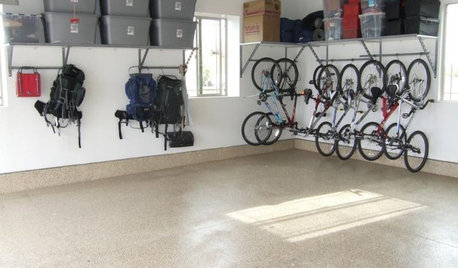
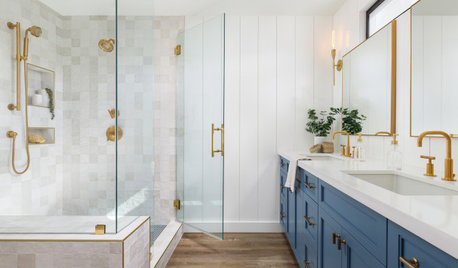

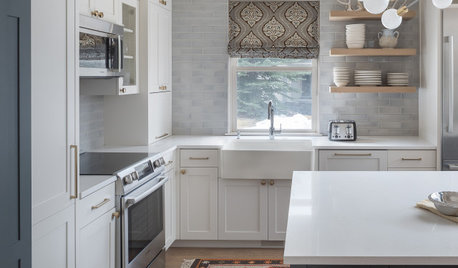
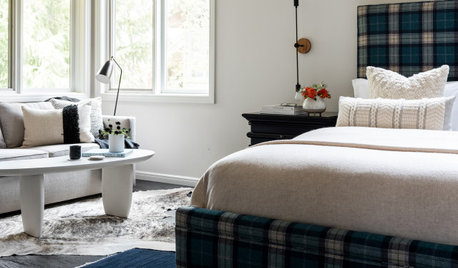
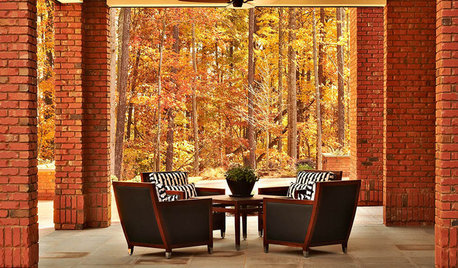











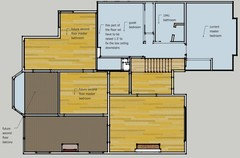
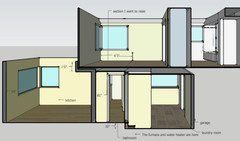



Kati